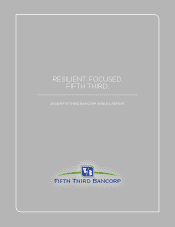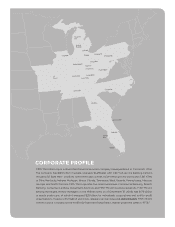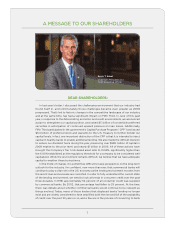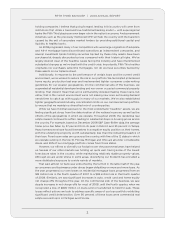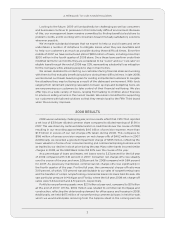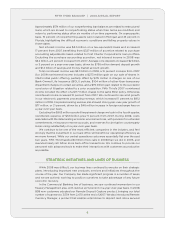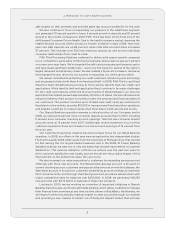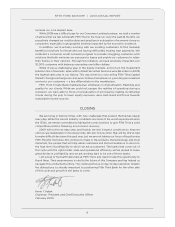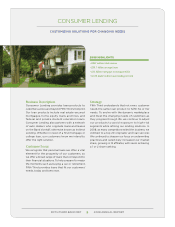Fifth Third Bank 2008 Annual Report Download - page 3
Download and view the complete annual report
Please find page 3 of the 2008 Fifth Third Bank annual report below. You can navigate through the pages in the report by either clicking on the pages listed below, or by using the keyword search tool below to find specific information within the annual report.
1
Dear shareholDers:
In last year’s letter, I discussed the challenging environment that our industry had
found itself in, and unfortunately those challenges became even greater as 2008
progressed. That’s led to historic changes in the competitive landscape of our industry,
and at the same time, has had a signicant impact on Fifth Third. In June of this past
year, in response to the deteriorating economic and credit environments, we announced
a plan to strengthen our capital position, and raised $1.1 billion of convertible preferred
securities in anticipation of continued upward pressure on loan losses. Additionally,
Fifth Third participated in the government’s Capital Purchase Program (“CPP”) and issued
$3.4 billion of preferred stock and warrants to the U.S. Treasury to further bolster our
capital levels. In fact, one important distinction of the CPP is that it is intended to inject
capital in healthy banks to enable additional lending. We also made the difcult decision
to reduce our dividend twice during the year, preserving over $580 million of capital in
2008 relative to the prior level, and nearly $1 billion in 2009. All of these actions have
brought the Company’s Tier 1 risk-based asset ratio to 10.59%, signicantly higher than
the 6.00% established as the regulatory threshold for a company to be considered well-
capitalized. While the environment remains difcult, we believe that we have adequate
capital to weather these trying times.
In the midst of change, it is sometimes difcult to keep perspective on the long-term
outlook for the industry. I’m condent, now more than ever, that commercial banks will
continue to play a vital role in the U.S. economy as the lending environment recovers from
the recent lows and excesses are corrected. In order to fully understand the current state
of the lending environment, we need to look at trends in consumer credit over the past
three decades. In 1978, approximately 54 percent of all consumer credit was supplied
by commercial banks. By 2002, that percentage had fallen to 29 percent. At the time,
there was debate about whether commercial banks would continue to be relevant as
things evolved. Today, many of those lenders that displaced banks’ lending no longer
exist and are widely considered to have amplied both the rise and fall of the availability
of credit over the past 30 years or so, and a few are in the process of converting to bank
Chairman, President and
Chief Executive Ofcer
A MESSAGE TO OUR SHAREHOLDERS

